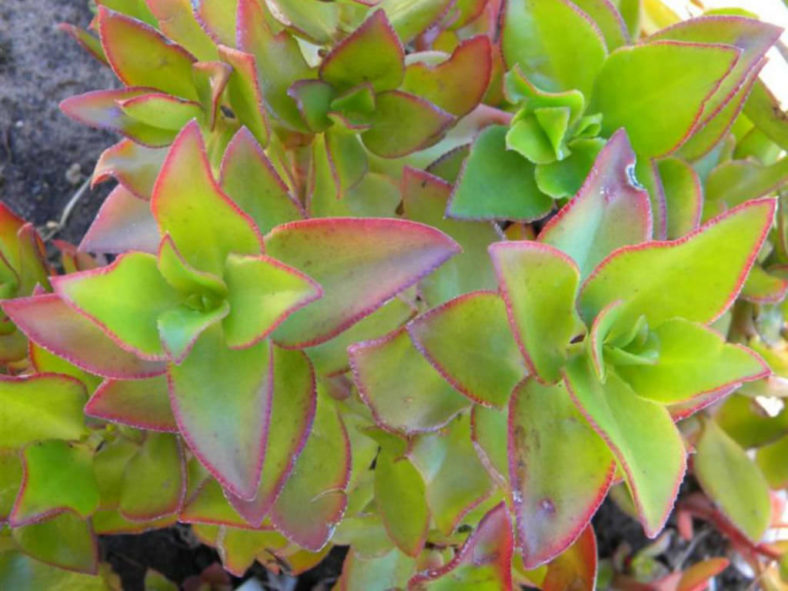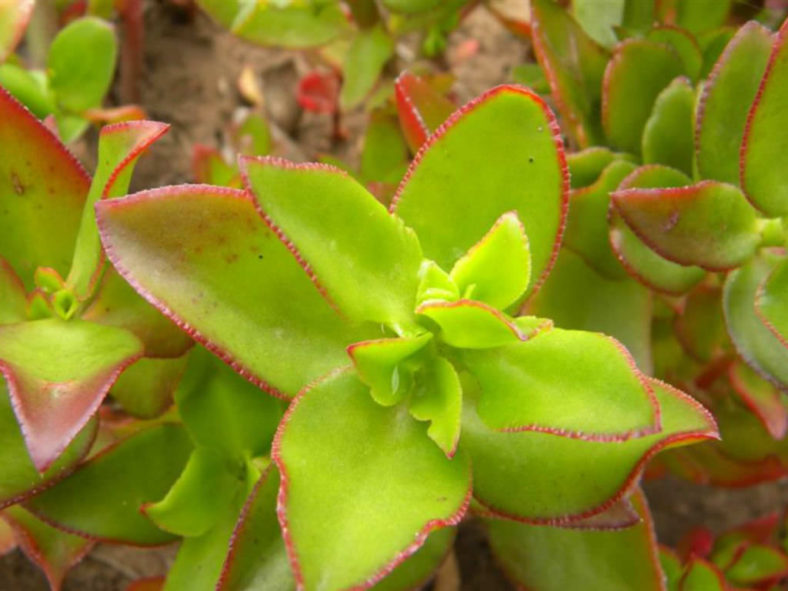Scientific Name
Crassula sarmentosa Harv.
Synonym(s)
Septimia sarmentosa
Scientific Classification
Family: Crassulaceae
Subfamily: Crassuloideae
Genus: Crassula
Etymology
The specific epithet "sarmentosa" (pronounced "sar-men-TOH-suh") means "sarmentose, having long, slender, prostrate stolons (runners)" and refers to the long, slender branches of this species.
Origin
Crassula sarmentosa is native to South Africa. It occurs along the eastern coastal belt from Knysna in the Western Cape to central KwaZulu-Natal and grows in fynbos, semi-arid scrub, and grasslands on rock faces or in ravines.
Description
Crassula sarmentosa is a mat-forming succulent with irregularly shaped tubers at the base of the stem that produce many trailing, climbing, or hanging branches with green or yellowish-green leaves. The branches are simple or loosely branched, growing up to 3.3 feet (1 m) long and 0.25 inches (0.6 cm) in diameter. They are reddish-pink to green, mottled with white. The leaves are elliptical to ovate, with serrated, often red margins, and may have a petiole. They measure up to 2.2 inches (5.5 cm) in length and 1.4 inches (3.5 cm) in width.
The flowers are star-shaped, 5-merous, white or cream-colored, rarely tinged red, and appear in terminal clusters in winter.

Varieties of Crassula sarmentosa
- Crassula sarmentosa var. integrifolia
- Crassula sarmentosa var. sarmentosa
Cultivars of Crassula sarmentosa
How to Grow and Care for Crassula sarmentosa
Hardiness: USDA hardiness zones 9b to 11b: from 25°F (-3.9°C) to 50°F (10°C).
Crassulas are easy to grow but susceptible to mealybugs and fungal diseases. As with all succulents, overwatering is sure to be fatal, so err on the side of being too dry rather than too wet. Never let your plant sit in water. If you water from beneath by allowing the plant to sit in a saucer, pour off any excess water after a few minutes.
These succulents are generally started by division, offsets, or leaf cuttings. Crassulas can be easily propagated from a single leaf. Sprout leaves by placing them into a potting mix for succulents, then cover the dish until they sprout.
Repot as needed, preferably during the warm season. To repot your Crassula, ensure the soil is dry before repotting, then gently remove the pot. Knock away the old soil from the roots, removing any rotted or dead roots. Treat any cuts with a fungicide. Place the plant in its new pot and backfill it with potting soil, spreading the roots as you repot. Leave the plant dry for a week or so, then begin to water lightly to reduce the risk of root rot.
Learn more at How to Grow and Care for Crassula.
Links
- Back to genus Crassula
- Succupedia: Browse succulents by Scientific Name, Common Name, Genus, Family, USDA Hardiness Zone, Origin, or cacti by Genus
Photo Gallery
Click on a photo to see a larger version.


